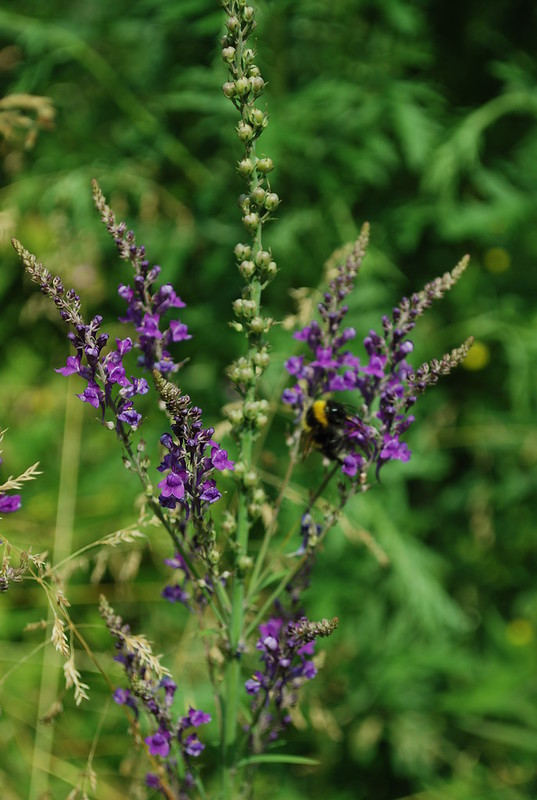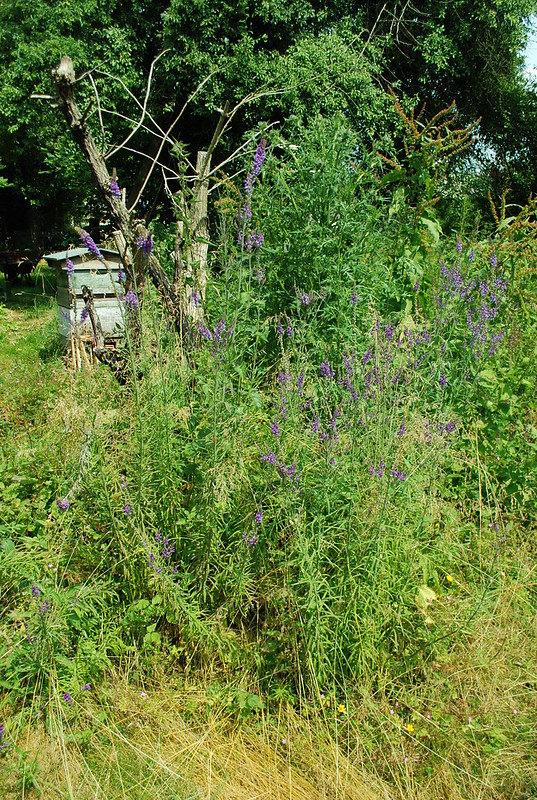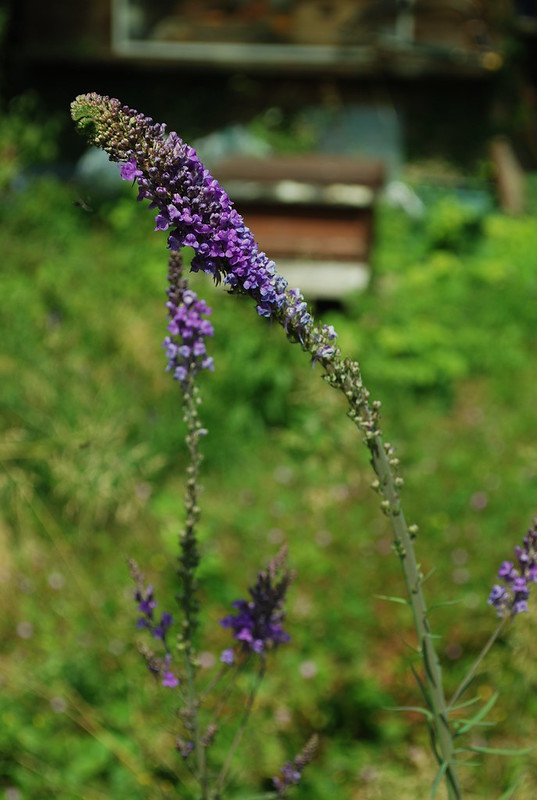I thought this was "vipers bugloss" but I'm no longer at all convinced by that. Even in the unwarped version. But this is an odd one. See how the stem has become flat, and the flower head all congested? I'd be interested to know what sort of oddity or gall this is, and also the True Name of the plant. Its a common weed or flower, depending on your viewpoint.
Here is a pic showing the stem from the side, so you can see how flat its become. For comparison, here's a normal one, with free bumblebee:
Here's the whole clump, with free beehive:
The warped one is on the lefthand side. Here's another oddly clubbed one (with free smaller beehive in background):
[Update: BrianO knows the secret. It is fasciation (sure 'nuff, live in a fever).]
For those of you cheated of your dose of climate snark, I recommend John Mashey on l'affair Salby which is well worth a good snark. Unfortunately there doesn't seem to be anything to say that hasn't been well said already, so I won't.
Refs
* We don't even know how many legs he's got (go on, guess why this is relevant)
- Log in to post comments





Viper's bugloss has exerted stamens, so while knowing what it's not only helps a little. Maybe a purple toad flax (Linaria purpurea). Does the corolla have a nectar spur?
[Excellent! You're right, its a purple toadflax. Thank you. Any idea about the deformity? -W]
Hi,
the stems are "fasciated". There are various causes - see http://en.wikipedia.org/wiki/Fasciation
It occurs in a wide range of plants, but some genera are more prone to it than others....Linaria is one of them. A phytoplasma has been identified from a Linaria fasciation.
BrianO
BrianO has the fasciation covered. Sorry, was concentrating on the ID before.
Agrobacterium tumifasciens?
It looks like common toadflax (Linaria purpurea) very invasive if it goes to seed,I don't know the cause of the deformation,mine often get that,sadly it doesn't stop the things self seeding.......
The world is not ready for uncommn toadflax.
not so weird but good
https://www.youtube.com/watch?v=Z_-8u86R3Yc
Thank you- I had long assumed vipers bugloss to be a consequence of better snake software.